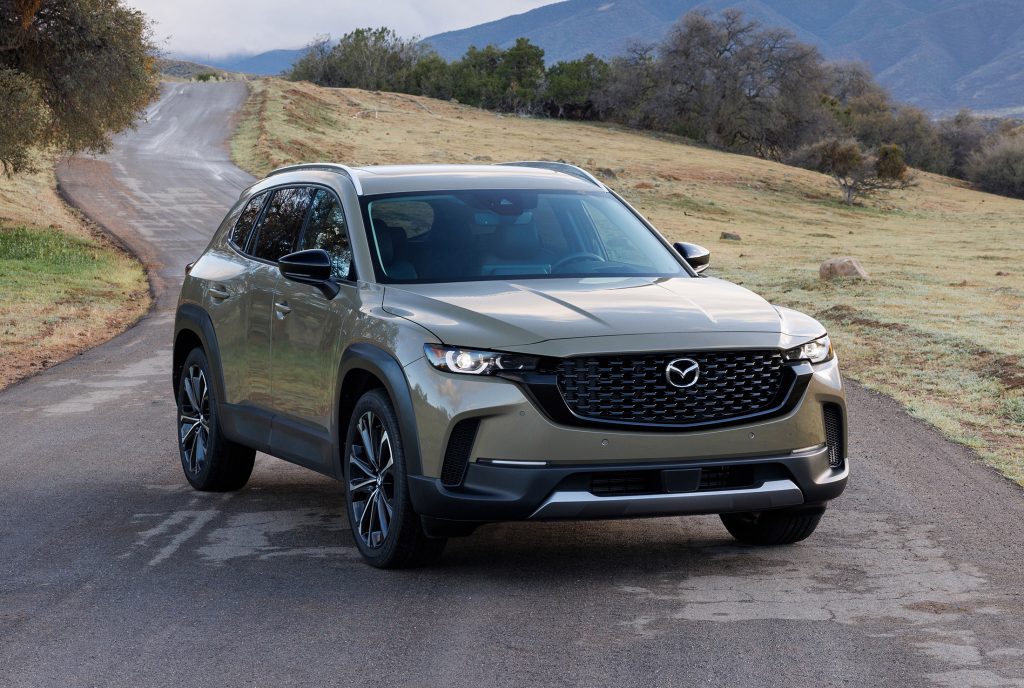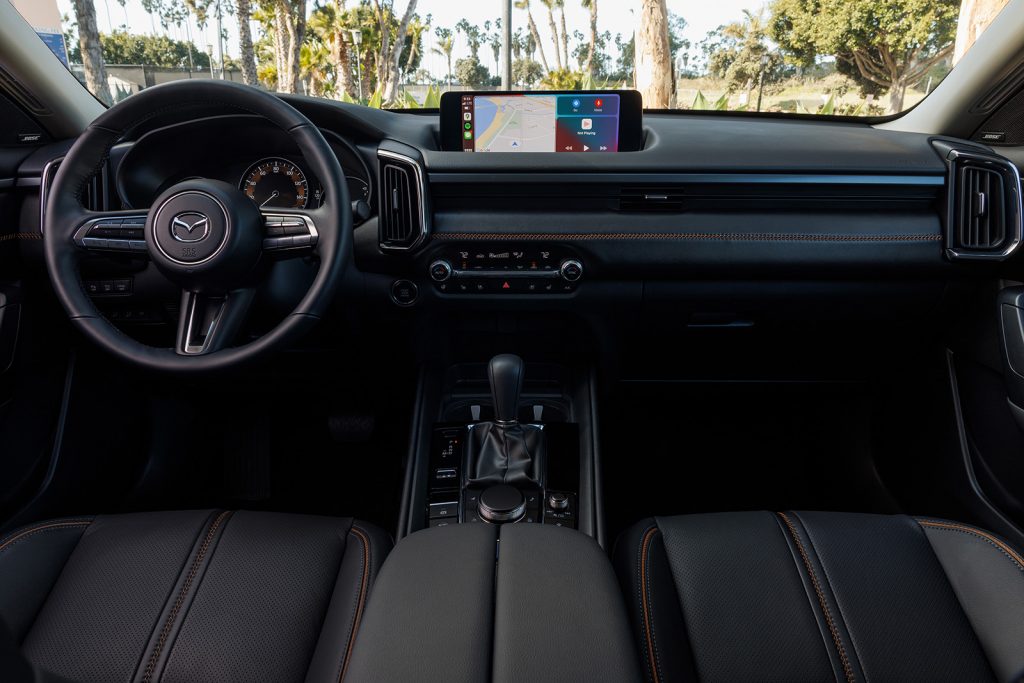Cargazing
By Derek Price
The 2025 Mazda CX-50 Hybrid represents something uncommon in today’s crossover landscape: a genuinely engaging hybrid that doesn’t sacrifice driving dynamics for fuel efficiency.
While most manufacturers treat electrification as an excuse to numb the driving experience, Mazda has created something that feels authentically sporty while delivering impressive economy.
Behind the wheel, the CX-50 Hybrid feels more responsive and nimble than its 219-horsepower output suggests. The Toyota-sourced hybrid system combines a 2.5-liter four-cylinder engine with electric motors and a continuously variable transmission, but Mazda’s engineers have tuned the package to feel less sluggish than typical CVT applications.
The steering remains precise and weighted, offering more engagement than you’ll find in a Toyota RAV4 or Honda CR-V Hybrid.
The trade-offs become apparent during acceleration runs, where the CX-50 Hybrid feels noticeably slower than the turbocharged variants. The engine note under load lacks refinement, producing a coarse sound that reminds you this powertrain prioritizes efficiency over auditory pleasure.

The 2025 Mazda CX-50 Hybrid maintains the model’s rugged, adventure-ready styling while adding subtle hybrid badging and unique wheel designs to distinguish it from gasoline variants.
For buyers seeking the CX-50’s inherently sporty character, the hybrid version dilutes some of those appealing qualities.
What the hybrid delivers exceptionally well is fuel economy. EPA estimates of 39 mpg city and 37 mpg highway represent genuine real-world efficiency that translates to meaningful savings at the pump.
During my week of mixed driving, the CX-50 Hybrid consistently delivered on those promises without requiring hypermiling techniques.
The interior continues Mazda’s impressive recent trajectory toward premium materials and thoughtful design.
The cabin feels more upscale than anything else in this price range, with quality soft-touch surfaces, logical control placement and an overall sense of refinement that justifies the premium over mainstream competitors.
Rear seat space feels tight for taller passengers, but front occupants enjoy excellent comfort and visibility.

The CX-50 Hybrid’s cabin features premium materials and intuitive controls that feel more upscale than most competitors, with supportive seats and excellent forward visibility for confident driving.
Mazda’s commitment to driving dynamics extends beyond the powertrain. The CX-50 Hybrid maintains the brand’s preference for slightly firmer suspension tuning and heavier steering effort, resulting in more controlled handling than most compact crossovers.
The ride quality pays a small penalty, but enthusiast drivers will appreciate the added connection and feedback. Off-road capability exceeds expectations for this segment, thanks to standard all-wheel drive and well-tuned traction management.
The Premium Plus trim tested here includes nearly every available feature, from the panoramic moonroof to premium Bose audio and advanced safety systems.
At just over $40,000, it represents solid value for the equipment level and build quality provided.
The CX-50 Hybrid succeeds in an area where many manufacturers struggle: maintaining brand character while embracing electrification.
It offers buyers who want both engaging dynamics and impressive fuel economy a compelling alternative to the increasingly bland hybrid crossover field.
At A Glance
WHAT WAS TESTED?
2025 Mazda CX-50 Hybrid Premium Plus ($40,050). Options: None. Price as tested (including $1,420 destination charge): $41,920
BY THE NUMBERS
Wheelbase: 110.8 in.
Length: 186.1 in.
Width: 80.8 in.
Height: 65.8 in.
Power: 2.5-liter four cylinder engine plus electric motor (combined 219 hp)
Transmission: Continuously variable
MPG: 39 city, 37 highway
RATINGS
Style: 8
Performance: 6
Price: 7
Handling: 9
Ride: 6
Comfort: 6
Quality: 8
Overall: 7
WHY BUY IT?
The CX-50 Hybrid delivers exceptional fuel economy and premium interior quality while preserving the engaging driving dynamics that make Mazda crossovers special.




